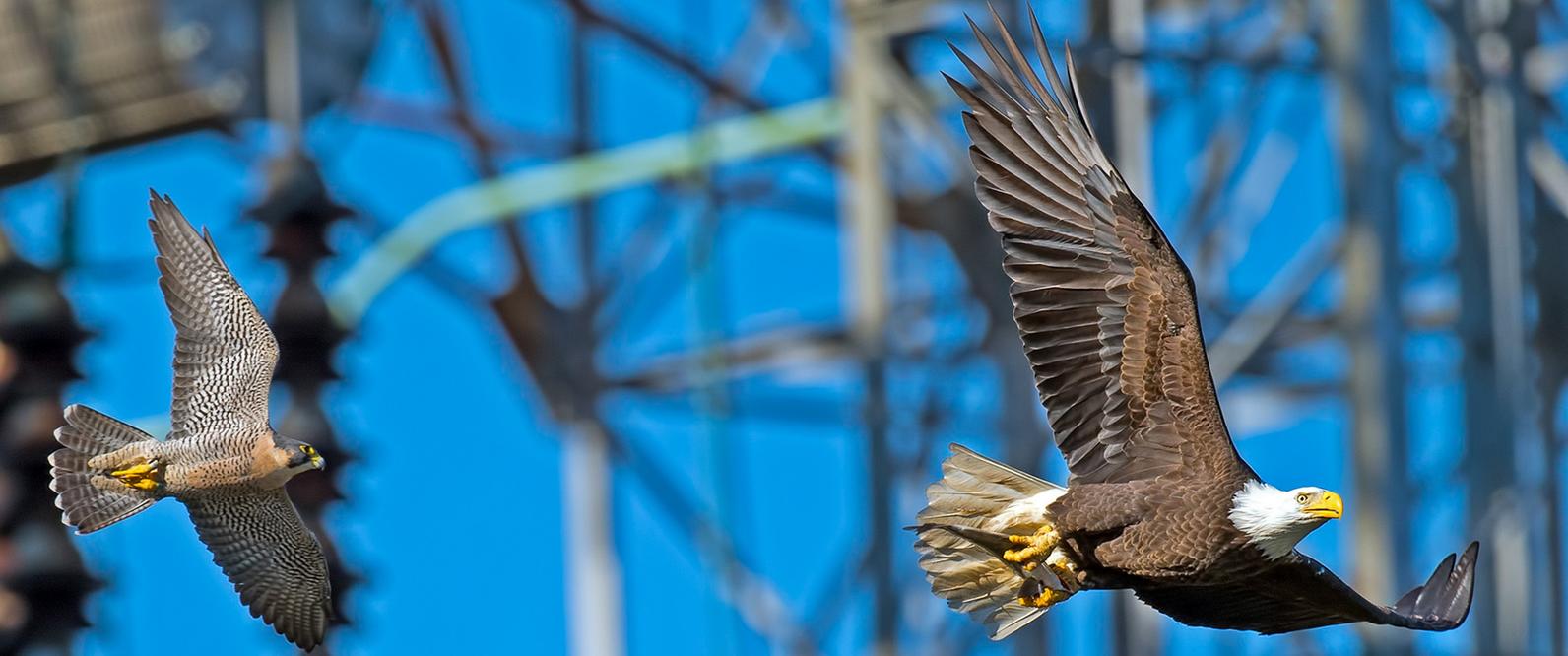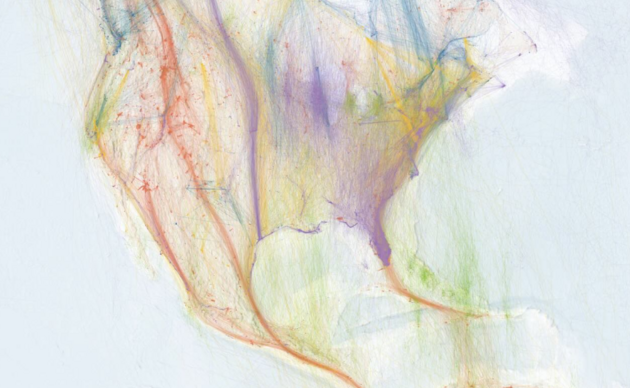Peregrine and Eagle Community Science Page

Welcome to our Peregrine and Eagle Community Science Page! Thank you for participating in this important monitoring effort.
Contact Info:
Margaret Fowle: margaret.fowle@audubon.org and 802-238-0046
Cali Rivera: cali.rivera@audubon.org
I will be working primarily in the field and from home office.
Google Docs with lists of sites and potential volunteers:
Peregrines: https://docs.google.com/document/d/1PUolsuix37fcqra8LmlsRQR7uB3BknlCSKnx...
Eagles: https://docs.google.com/document/d/1Mr0JIPHGcfXt2CCE0zgmrnxtlJ-shAkNeCw4...
Please put your name in BOLD or add it to the site if you are planning to monitor in 2025.
Monitoring Protocol: Please use an online application called Survey123. WE NOW HAVE ONE SURVEY123 PLATFORM FOR BOTH SPECIES. THIS IS HOSTED BY VT FISH & WILDLIFE. PLEASE SEE INFO BELOW ON HOW TO ACCESS THIS SURVEY. THE OLD SURVEY123 FORMS WILL NO LONGER BE AVAILABLE FOR USE. See more details below.
Peregrines: We ask that you visit your site(s) at least one time per month (April, May, June, July) for at least 3 hours, unless you confirm what is going on in less time (i.e., if you confirm that the pair is incubating at the previous year’s ledge in 45 minutes, you can leave after 45 minutes. If you are still unsure of what is happening after 3 hrs, you can stay longer or let me know, and we can try to interpret your sightings). You can go to your site more often if you’d like, of course.
Please try to time your site visit when the light is best at the cliff (i.e., afternoons for west-facing cliffs and mornings for east-facing cliffs).
We recommend that you go to your site during decent weather (i.e., no rain, fog, snow, or high winds). Peregrines are generally inactive during inclement weather, and it is not worth trying to see through a scope in high winds or foggy weather. If you do get rained/snowed out, please visit the site again before the month time period is over.
If for some reason you aren’t able to make it to your site one month, please let me know ASAP so I can fill in any gaps.
Eagles: We ask that you visit your site(s) at least twice per month (April, May, June, July) for at least 1 hour, unless you confirm what is going on in less time (i.e., if you confirm that the pair is incubating at the previous year’s nest in 15 minutes, you can leave after 15 minutes. If you are still unsure of what is happening after 1 hr, you can stay longer or let me know, and I can try to interpret your sightings). You can go to your site more often if you’d like, of course.
Please try to time your site visit when the light is best at the nest – it may take a visit or two to determine the best time of day.
We recommend that you go to your site during decent weather (i.e., no rain, fog, snow, or high winds). It is not worth trying to see through a scope in high winds or foggy weather. If you do get rained/snowed out, please visit the site again before the 2-week time period is over.
If for some reason you aren’t able to make it to your site for more than two weeks, please let me know ASAP so we can fill in any gaps.
Have fun, and thank you for your efforts
2025 Data Entry – Submitting data online (or even directly in the field) should help me summarize info more quickly and easily during and post field season. Survey123 (see links below) should help me summarize info more quickly and easily at the end of the field season. Survey123 is an application created by ESRI, the company that developed online mapping tools. For Survey 123, you can download the app on your smartphone or tablet and use it in the field, or you can enter your data via a web page. Instructions are below. Online forms are an attempt at streamlining the process, so thanks for your patience as we continue to tweak and make changes every year. If this doesn't work for you, you can download the data form at the bottom of the page.
Survey 123: SEE NEW LINKS/QR CODES BELOW
For the web version, click on links above and follow the prompts to submit your entries. Make sure you submit your entry when finished. You should see a screen that says your data have been submitted after you enter the report on the web version.
URL to the survey for use in the BROWSER (works best if you copy and paste): https://arcg.is/1mKWjO
QR Code for use in the BROWSER:
Use your camera on your phone to scan in the QR code. You should then see the survey on your browser.
For the app version, download the app from either the Apple App store or Google Play, depending on your type of smartphone or tablet. Once you download, you:
1) Open the app and click "continue without signing in"
2) Click the QR button in the icon, or go to the URL to the survey for use in the APP (copy and paste in your browser): https://survey123.arcgis.app?itemID=8bd7a3fc4624409c9a8e340cb4ed9361
QR Code to open the survey in the APP:
3) Use your camera on your phone to scan in the QR code. You should then see the survey in the app.
If you are not able to use the online features, the old data forms are available below for download, or you can just summarize ALL the info requested in an email (ie weather, time of site visit, length of visit, summary of observations, etc). Please try to either submit or send your entries ONE WEEK after each site visit.
Volunteer time & mileage tracking 2024 – THIS IS THE SAME AS 2023 - YOU MUST EITHER USE THE VT F&W DEPARTMENT ONLINE PORTAL OR SEND IN SIGNED PAPER COPIES OF THE FORMS
Link to log in to the portal:
https://anrweb.vt.gov/FWD/Volunteer/Login.aspx (if this does not work, copy and paste the address in your browser)
QR Code for the time and mileage entry portal:
Instructions for using this system are located in the instructions document below.
If you'd prefer to submit your hours on paper, the activity logging document is available for download below. Please use "Field Survey" in the activity description.
Additional Resources (can be downloaded below):
1) OLD Peregrine Volunteer Packet – many of you have this either as a hard copy or scanned in version, and while it is very out-of-date, it may come in handy as a refresher for behavioral info.
2) Summary of Eagle Behaviors - general info on what to look for and when.
For more information on these two species and their recovery efforts in Vermont, please visit: https://vt.audubon.org/conservation/science
How you can help, right now
Donate to Audubon
Help secure a future for birds at risk from climate change, habitat loss and other threats. Your support will power our science, education, advocacy and on-the-ground conservation efforts.
Visit Audubon
It's always a good time to visit the Audubon Center. Trails are open to the public year-round. Visit us daily from dawn until dusk! Donations are appreciated.
Events
Adults, preschoolers, foresters, photographers, sugarmakers and families will all find opportunities to connect with nature.




